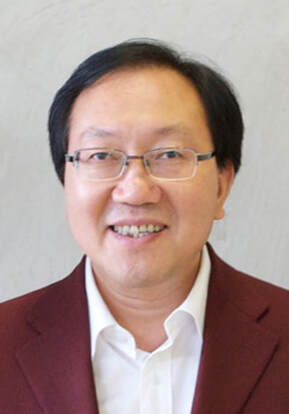|
By Ekaterina Dobryakova Tianzi Jiang is a Director of the Brainnetome at the Institute of Automation the Chinese Academy of Sciences in Beijing, China and a Professor of Neuroimaging and Brainnetome at the Queensland Brain institute of University of Queensland, Australia. The Brainnetome Center attempts to take into consideration the social and environmental effects on the brain of individuals with psychiatric and neurological disorders while examining structural and functional brain characteristics in a multimodal fashion. The Brainnetome atlas, one of the major projects of the Brainnetome Center, currently contains 246 brain regions and allows examination of anatomical connectivity-based parcellation of various brain area. Here we briefly found out about Professor Jiang’s background and his diverse interests centered on the Brainnetome.  Professor Tianzi Jiang Professor Tianzi Jiang Ekaterina Dobryakova (ED): What motivated you to start a career in brain mapping? Tianzi Jiang (TJ): All of my degrees were in mathematics. After my PhD, I started my postdoctoral training in computer vision and image processing. I was and remain very interested in how we can use mathematics to understand the brain’s organization. It motivated me to start my career in brain mapping twenty years ago, when I worked at Max Planck Institute for Human Cognitive and Brain Sciences. ED: You are involved in diverse areas of research from mental illness to macaque MRI. Will your keynote presentation highlight all areas of your research or focus on a specific direction that your lab is pursuing? TJ: I run a research center called the Brainnetome Center. In this center, we have four key research themes: the basic theory of the Brainnetome, modeling and simulation of the Brainnetome, imaging instrument development, and translational medicine. I am really involved in diverse areas. However, in my keynote lecture, I will just focus on the Human Brainnetome atlas; what this is and how we can construct it with anatomical connectivity profiles, how we can verify its reliability with different methods, and how we can apply it to address a variety of issues from neuroscience and clinical practice. I will also give a perspective in this field. ED: You are involved in a major “Brainnetome” project. What is the Brainnetome – and what do you hope to achieve with the data? TJ: The Brainnetome (Brain-net-ome) is a new –ome. It takes a brain network as basic research unit, which consists of two components: a node and a connection. It can be studied on different scales from a neuron to a brain region. We hope to achieve the following five goals: (1). Topological Structure of Brain Networks (Brainnetome Atlas); (2). Dynamics and Characteristics of Brain Networks; (3). Network Manifestation of Functions and Malfunctions of the Brain; (4). Genetic Basis of Brain Networks; (5). Simulating and Modeling Brain Networks on Supercomputing Facilities. For more information on the Brainnetome, please refer to my paper entitled “Brainnetome: A new -ome to understand the brain and its disorders”, NeuroImage, 80 (2013):263–272. KD: What do you consider to be your greatest scientific achievements? TJ: My greatest scientific achievements are contributions to understanding of brain structural and functional organization, and their dysfunctions using neuroimaging, especially on development of the Human Brainnetome Atlas (HBA). The HBA includes 246 subregions and the anatomical and functional connectivity profiles for each subregion. The atlas is an in vivo map. The fine-grained functional brain subregions and associated anatomical/functional connection patterns could help researchers and clinicians to describe the large-scale architecture of the human brain and accurately localize the targeted brain regions for therapeutics. The HBA was among the Top 10 Breakthroughs in Science and Technology of China in 2016, jointly selected by the Fellows from the Chinese Academy of Sciences and the Chinese Academy of Engineering. It was also ranked on the Top 10 Breakthroughs in Medicine of China in 2016. Recently, the HBA was selected as a part of 40 Milestone Achievements of the Chinese Academy of Sciences in the last 40 years (1978 -2018). KD: So this is a two part question: What is/are the most important things you do as a mentor with your team/lab? Second, is this advice based on your own experience during your training or things you wished you could have benefited from as a trainee? TJ: I think that the most important things I have done as a mentor with my lab is to decide promising directions, which can be worked on for several decades and set up facilities for it. Then we need bright trainees and collaborators to work together. Great goals need a great team to achieve them.
0 Comments
Your comment will be posted after it is approved.
Leave a Reply. |
BLOG HOME
Archives
January 2024
|
 RSS Feed
RSS Feed